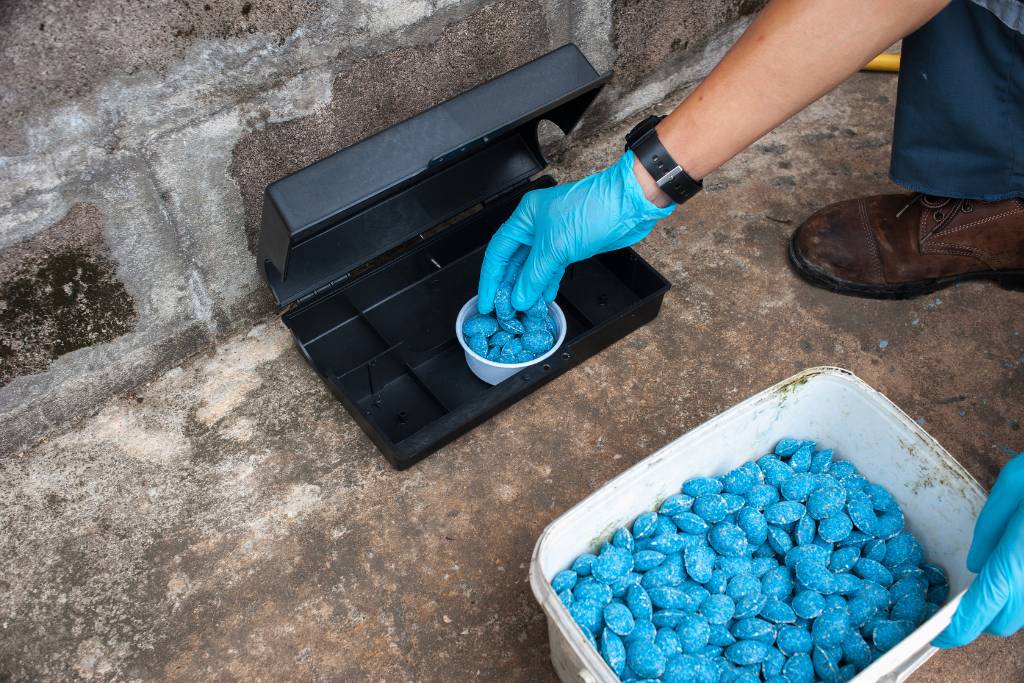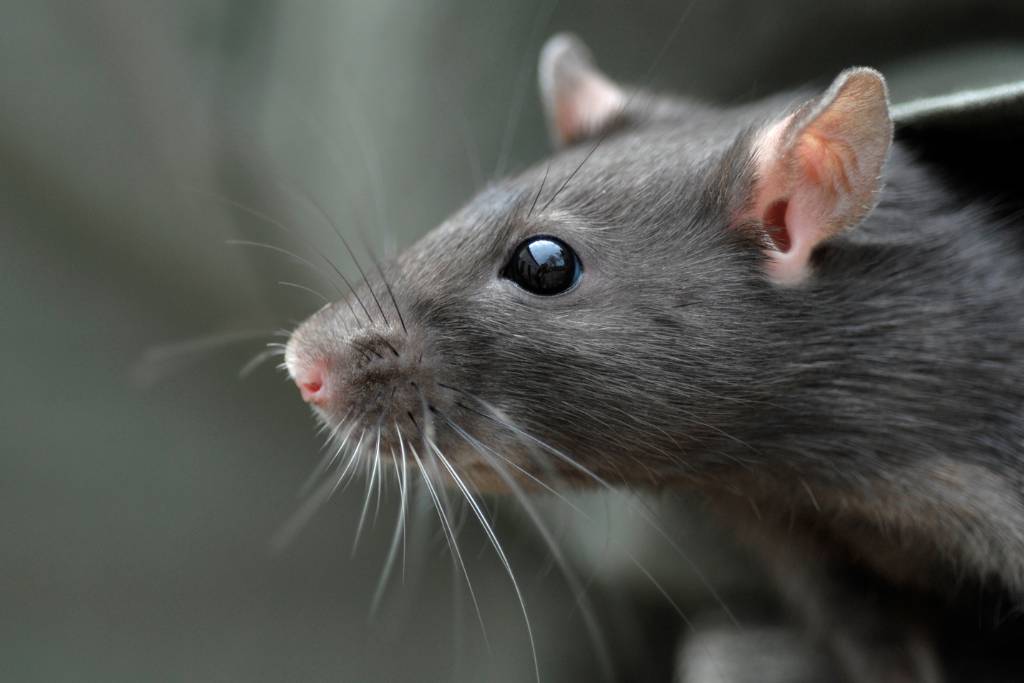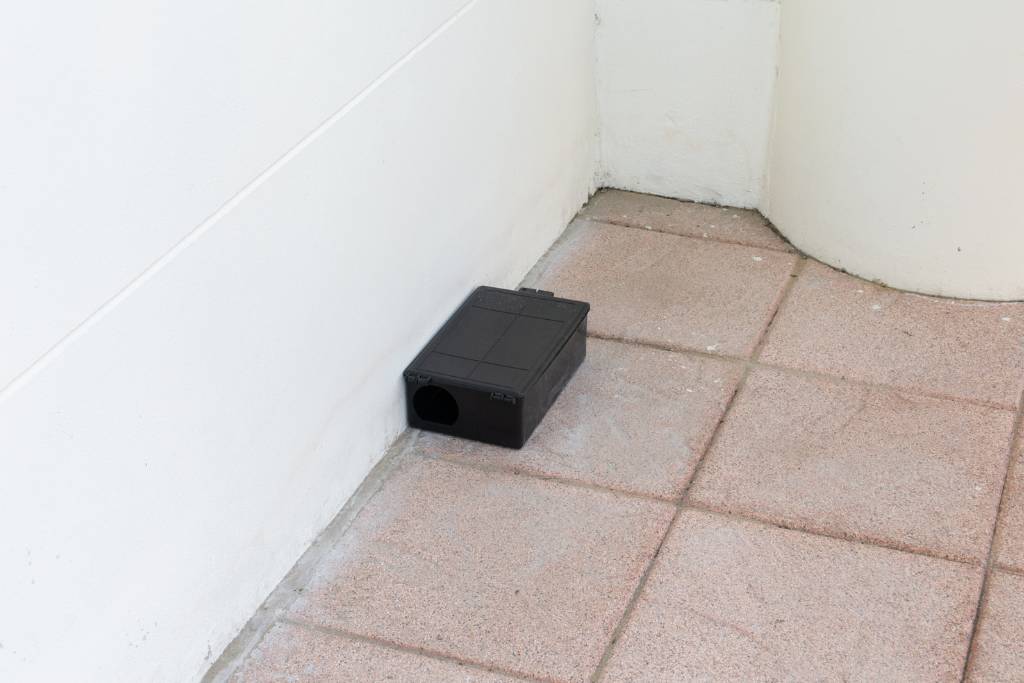Rodenticides are classified based on their toxicity into different types, including first-generation anticoagulants (e.g. warfarin), second-generation anticoagulants (e.g. brodifacoum), non-anticoagulants (e.g. bromethalin), and natural rodenticides (e.g. corn gluten meal).
First-generation anticoagulants are moderately toxic and can cause coagulopathy, while second-generation anticoagulants are highly toxic and can result in prolonged bleeding. Non-anticoagulants, such as bromethalin, are highly toxic neurotoxins that affect the nervous system, and natural rodenticides are typically low in toxicity but can still pose risks if ingested in large amounts.
Understanding the toxicity levels and potential risks associated with each type of rodenticide is crucial for effective rodent control and management. Inappropriate use or handling of rodenticides can lead to accidental poisoning of non-target animals, pets, and humans. Additionally, rodents can develop resistance to certain rodenticides, making it essential to use a targeted approach based on the specific type of rodent and the environment in which they are found.
In conclusion, understanding the classification of rodenticides is vital for minimizing risks and effectively managing rodent populations while minimizing harm to other animals and humans.
Definition of rat poison
Rat poison, also known as rodenticide, encompasses various types of chemical substances used to kill rats and other rodents. There are three main types of rat poison – anticoagulants, acute toxicants, and non-anticoagulants – each with different effects on the target animals. However, these products can also pose significant risks to humans.
Common ingredients found in rat poison products include anticoagulant compounds such as warfarin, brodifacoum, and bromadiolone, as well as acute toxicants like bromethalin and cholecalciferol. When ingested, these substances can have severe and potentially fatal effects on humans, including bleeding, nausea, vomiting, seizures, and organ damage. Additionally, the presence of these toxic chemicals in the environment can also lead to unintended poisoning of pets and wildlife.
Overall, rat poison presents a danger to both target animals and unintended victims, making it crucial to handle and dispose of these products with caution.
Importance of controlling rodent populations
Controlling rodent populations is essential for maintaining a healthy and safe environment. Rodents, such as mice and rats, can carry diseases, contaminate food and cause damage to property. These pests multiply rapidly, so effective control measures are necessary to prevent infestations. By actively managing rodent populations, we can minimize the risks to human health and protect our homes and businesses from the destructive effects of these creatures. This involves implementing proactive strategies to prevent infestations, such as maintaining cleanliness, sealing entry points, and using traps and baits. Additionally, it is important to address environmental factors that attract rodents, such as food sources and nesting areas, in order to achieve long-term control. Proactively controlling rodent populations not only promotes a healthier and safer living and working environment, but it also saves time and money by preventing the need for costly repairs and medical treatments.

Types and Active Ingredients of Rat Poisons
There are two main types of rat poisons: anticoagulant and non-anticoagulant.
Anticoagulant rat poisons contain active ingredients such as warfarin, brodifacoum, and bromadiolone. These chemicals work by preventing the blood from clotting, leading to internal bleeding and ultimately death in the affected rodents. Treatment for anticoagulant poisoning in both humans and animals involves vitamin K1 therapy, which helps restore the blood’s ability to clot.
Non-anticoagulant rat poisons include cholecalciferol, strychnine, and zinc phosphide. Cholecalciferol (vitamin D3) toxicity causes hypercalcemia and can lead to heart and kidney damage in humans and animals. There are no specific antidotes for non-anticoagulant poisonings, and treatment mainly involves supportive care and symptom management.
Zinc phosphide is a chemical compound used in some non-anticoagulant rat poisons, which releases toxic phosphine gas in the stomach, causing respiratory failure and death in the poisoned rodent. This type of poison does not have a specific antidote, and treatment is primarily supportive in nature.
It is important to handle all rat poisons with caution and follow manufacturer’s instructions to prevent accidental poisoning in humans and non-target animals.
Classification of rat poisons into first-generation and second-generation rodenticides
Rat poisons are classified into first-generation and second-generation rodenticides based on their mechanisms of action and potency. First-generation anticoagulants, such as warfarin and chlorophacinone, inhibit the production of vitamin K, leading to internal bleeding and death. They have a shorter duration of anticoagulant effects, requiring multiple feedings for lethal doses. On the other hand, second-generation anticoagulants, including brodifacoum and difethialone, have a higher potency and longer anticoagulant effects, often causing death with a single feeding.
The differences in duration of anticoagulant effects have significant impacts on non-target animals. First-generation anticoagulants are less likely to accumulate in predators and scavengers, while second-generation anticoagulants can build up in the food chain and pose a greater risk to wildlife and pets. This accumulation can lead to secondary poisoning of non-target animals, causing unintended harm to the environment.
In conclusion, the use of rodent poisons, particularly second-generation anticoagulants, poses potential risks to wildlife and pets through the accumulation and ingestion of these toxic substances. It is important to use rodenticides responsibly and consider alternative methods of rodent control to minimize the impact on non-target animals.
Explanation of the active ingredients used in rat poisons
The active ingredients commonly used in rat poisons are anticoagulants, which include first-generation and second-generation anticoagulants, as well as long-lasting superwarfarins. First-generation anticoagulants, such as warfarin, effectively block the production of vitamin K in the rat’s liver, which is essential for blood clotting. This leads to internal bleeding and eventually death. Second-generation anticoagulants, like brodifacoum and difenacoum, have a longer duration of action and are more potent than the first-generation, making them effective even in cases of multiple feedings by the pest.
Superwarfarins, such as bromadiolone and brodifacoum, are long-lasting anticoagulants that work by inhibiting the recycling of vitamin K in the body, leading to a severe vitamin K deficiency and subsequent uncontrolled bleeding.
These active ingredients work to ratify pests by causing internal bleeding, preventing the blood from clotting, and eventually leading to death. These poisons are designed to have a delayed effect, giving the rat time to return to its nest after ingesting the poison, thereby spreading the poison to other members of the rat colony. Overall, these active ingredients are effective in eradicating rat infestations.

Second-generation anticoagulants as blood thinners
Second-generation anticoagulant rodenticides include brodifacoum, difenacoum, bromadiolone, and difethialone. These blood thinners work by inhibiting the production of vitamin K-dependent clotting factors in the liver. Without these clotting factors, the blood takes longer to clot, which can be fatal for rodents and other animals that consume the poison.
Superwarfarins, a type of second-generation anticoagulant, have long-lasting effects on blood clotting. These compounds have a half-life ranging from several weeks to months, meaning they stay in the body for an extended period. This can lead to uncontrolled bleeding and hemorrhaging in the affected animals. Vitamin K1 therapy is the standard treatment for superwarfarin poisoning. Vitamin K1 helps replenish the depleted clotting factors in the liver and restores the blood’s ability to clot.
Reversing the blood thinning effects of anticoagulant rodenticides can be achieved through the administration of large doses of vitamin K1 or fresh frozen plasma. These treatments can help counteract the effects of the poison and restore normal blood clotting function. It is crucial to seek immediate medical attention if poisoning is suspected to prevent severe complications.
Zinc phosphide and its effects on rodents
Zinc phosphide is a commonly used rodenticide that is highly effective in controlling rodent populations. It is a highly toxic chemical compound that is used to kill rodents such as rats and mice. However, it has a number of potential effects on rodents beyond just killing them, some of which are important to consider for effective pest control and environmental impact.
Effects on rodents:
Zinc phosphide works by releasing phosphine gas in the stomach of the rodent, leading to respiratory failure and eventual death. In addition to its lethal effects, zinc phosphide can also have sublethal effects on rodents, such as causing pain and discomfort before death. This can lead to increased burrowing and gnawing behavior as the rodents attempt to alleviate their discomfort, potentially causing damage to structures and crops. Furthermore, there is concern about the potential for secondary poisoning of non-target species that consume rodents killed by zinc phosphide, making it important to use caution and proper disposal methods when using this rodenticide. Understanding the full range of effects of zinc phosphide on rodents is important for effective and responsible pest control practices.
Health Risks Associated with Rat Poisoning
Rat poisoning in humans can lead to a range of symptoms and health risks, including bleeding from the gums, nose, or skin; altered mental status; convulsions; internal bleeding; and dehydration. These symptoms can be caused by the ingestion of rat poison containing toxic ingredients such as bromethalin, thallium, and cholecalciferol.
Bromethalin is a highly toxic neurotoxin that can lead to paralysis and seizures. Thallium, a heavy metal, can cause severe neurological and gastrointestinal symptoms, as well as hair loss. Cholecalciferol, a form of vitamin D, can lead to high levels of calcium in the blood, resulting in organ damage and failure.
In the event of suspected rat poisoning, it is crucial to seek immediate medical attention. Healthcare providers should be informed of the active ingredient in the poison to ensure the appropriate treatment is administered. With prompt medical care, the potential health risks associated with rat poisoning can be mitigated.
Secondary poisoning through accidental ingestion or contact with poisoned rodents
Secondary poisoning occurs when an animal ingests or comes into contact with poisoned rodents and suffers from the effects of the toxic substances used to control rodent populations. Potential risks and consequences of secondary poisoning include impacts on wildlife, pets, and humans. Wildlife and non-target species may be affected by consuming poisoned rodents, leading to illness or death. Predatory animals, scavengers, and pets are at risk of ingesting poisoned rodents, leading to non-selective killing effects from second-generation anticoagulant rodenticides. These rodenticides can persist in the environment and bioaccumulate in the food chain, posing a threat to wildlife and pets. To prevent secondary poisoning and minimize the impact of rodenticides on non-target species, it is essential to use alternative rodent control methods such as trapping, exclusion, and habitat modification. Proper bait station placement and secure rodenticide storage can also help minimize accidental ingestion by non-target species. Additionally, raising awareness about the dangers of rodenticides and promoting responsible use can help mitigate the risks of secondary poisoning.

Effects on humans, pets, and wildlife
Rodenticides are chemicals designed to kill rodents, but they can also have harmful effects on humans, pets, and wildlife. In humans, exposure to rodenticides can cause symptoms such as nausea, headache, dizziness, and difficulty breathing. In extreme cases, it can lead to seizures, organ failure, and even death. Pets can experience similar symptoms, along with weakness, vomiting, and loss of coordination. Wildlife, such as birds of prey, can also be affected if they consume poisoned rodents, leading to potential harm or death.
The impact of rodenticides on different species can have long-term effects on the environment. For example, the poisoning of non-target species can disrupt the natural ecosystem and lead to population declines in certain wildlife populations. Additionally, the accumulation of rodenticides in the environment can pose a threat to the overall health of ecosystems.
Common signs of rodenticide poisoning in pets include lethargy, weakness, pale gums, and difficulty breathing. If you suspect your pet has been poisoned, it is crucial to seek immediate veterinary care. Additionally, there are potential risks of secondary poisoning for wildlife that consume poisoned rodents, which can further disrupt the balance of the ecosystem. Therefore, it is important to use rodenticides responsibly and consider alternative methods of rodent control to minimize the impact on humans, pets, and wildlife.
Acute liver failure and kidney failure as potential consequences
Acute liver failure and kidney failure can have severe consequences for overall health when they occur. These conditions can result from various factors such as drug overdose, viral hepatitis, or other serious medical conditions.
Acute liver failure can lead to a build-up of toxins in the body, causing jaundice, confusion, and even coma. If left untreated, it can be life-threatening. Meanwhile, kidney failure may lead to the accumulation of waste products and fluids in the body, resulting in symptoms such as fatigue, shortness of breath, and swelling in the legs.
The relationship between acute liver failure and kidney failure is often interlinked, as liver failure can lead to decreased blood flow to the kidneys, thereby causing kidney damage. This can further worsen the condition of the liver, creating a dangerous cycle.
Treatment options for acute liver failure and kidney failure may include medications to manage symptoms, dialysis to support kidney function, and in severe cases, organ transplant. However, the best approach is to prevent these conditions by seeking medical attention for drug overdose, getting vaccinated against viral hepatitis, and managing underlying medical conditions. Early intervention is crucial in preventing the potential consequences of acute liver and kidney failure.
Renal failure caused by rodenticides
Renal failure caused by rodenticides is a serious condition that occurs when an individual, usually a pet, ingests toxic chemicals found in common rodenticides. These chemicals can cause damage to the kidneys, leading to renal failure and potentially life-threatening complications. It is important for pet owners to be aware of the dangers of rodenticides and to take preventive measures to keep their pets safe. Understanding the signs and symptoms of renal failure caused by rodenticides, as well as seeking immediate veterinary care in the event of suspected ingestion, is crucial in order to minimize the potential damage to the kidneys and improve the chances of a successful recovery for the affected pet.
Clinical Toxicology and Treatment Options for Rat Poisoning
Rat poisoning, specifically anticoagulant rodenticides, can cause severe clinical toxicology effects in humans and animals. These effects include bleeding, bruising, and an increased risk of hemorrhage. Treatment options for rat poisoning often include decontamination, supportive care, and the use of vitamin K1 therapy to reverse the blood-thinning effects of anticoagulant rat poisons. Vitamin K1 helps restore the body’s ability to form blood clots and control bleeding, effectively counteracting the toxic effects of the poison.
First-generation anticoagulant rat poisons, such as warfarin, have a shorter half-life and are generally less toxic to non-target animals. In contrast, second-generation anticoagulants, like brodifacoum and bromadiolone, have longer half-lives and are more potent, posing a greater risk to wildlife and pets. The dangers of using second-generation rodenticides have led to restrictions by the Environmental Protection Agency (EPA) on their public use to minimize unintended harm to non-target species.
In conclusion, rat poisoning can have serious clinical toxicology effects, but treatment options such as vitamin K1 therapy can help reverse the harmful effects of anticoagulant rat poisons. Understanding the differences between first-generation and second-generation anticoagulants is essential in minimizing the impact on wildlife and pets.

Best alternatives for rat poison:
There are several alternatives to traditional rat poison that can effectively control rodent populations while minimizing the risks associated with toxic chemicals. It is important to consider these alternatives to protect both humans and non-target animals from harm.
- Snap Traps: Snap traps are a classic and effective method of trapping rats. These traps use a spring-loaded mechanism to quickly and humanely kill rodents upon activation. They are relatively safe to use and pose minimal risk to non-target animals when placed in areas inaccessible to pets or wildlife.
- Electronic Traps: Electronic traps are another humane and effective alternative to rat poison. These traps use batteries or electricity to deliver a lethal shock to the rodent when it enters the trap. They are designed to be safe for use around pets and children, as they typically have safety mechanisms that prevent accidental activation by non-target animals.
- Ultrasonic Repellers: Ultrasonic repellers emit high-frequency sounds that are unpleasant to rodents, effectively driving them away without the use of toxic chemicals. These devices are safe for use around pets and humans, as the sound frequencies are typically beyond their hearing range.
- Natural Repellents: Using natural repellents can help deter rats from entering your home or property. Some common natural repellents include peppermint oil, mothballs, and ammonia. These substances emit strong smells that rats find unpleasant and will help keep them away.
- Sealing Entry Points: One of the best ways to prevent rats from entering your home is by sealing off any potential entry points (read more about rodent proofing). Rats can squeeze through small gaps and cracks, so it’s important to thoroughly inspect and seal any openings in walls, floors, or foundations. Use materials such as steel wool or caulk to close off these entry points and prevent rats from gaining access.
- Proper Sanitation: Keeping a clean and sanitary environment can also help deter rats from infesting your property. Ensure that food is stored properly in sealed containers, garbage is disposed of regularly, and any spills or crumbs are promptly cleaned up. Rats are attracted to food sources, so by removing these temptations, you can make your property less appealing to them.
While rat poison may seem like a quick and easy solution for rodent control, it comes with significant risks to non-target animals and the environment. By considering these alternative methods, you can effectively manage rat populations without endangering wildlife or pets. It is important to prioritize the well-being of all creatures, including rodents, in our pest control efforts.
Frequently Asked Questions:
What is Clin Toxicol?
Clin Toxicol is the field of toxicology that focuses on the study and treatment of poisonings and toxic exposures in humans.
What are the different classes of rodenticides?
There are two primary classes of rodenticides: first-generation and second-generation. First-generation rodenticides include chemicals such as warfarin and are typically less potent and slower-acting. Second-generation rodenticides are more potent and include chemicals such as brodifacoum and bromadiolone.
What are first-generation rodenticides?
First-generation rodenticides are older, less potent compounds that were commonly used for rodent control. They have anticoagulant properties, which means they interfere with the blood clotting process, leading to internal bleeding in rodents.
When should you contact Poison Control regarding rat poison?
It is important to contact Poison Control immediately if you suspect accidental ingestion or exposure to rat poison. They can provide critical guidance on how to respond, whether to induce vomiting, and if further medical attention is necessary.
What should I do with dead rodents after poisoning them?
When dealing with dead rodents after using rat poison, it is essential to practice proper hygiene and safety measures. Use gloves and a mask while handling the rodent and dispose of it in a sealed bag or container. Avoid direct contact with the carcass and wash your hands thoroughly afterward.
Remember, it is important to follow the instructions provided by rodenticide manufacturers and consult with professionals to ensure safe use and handling.
Need professional help? call Attic Crew today for the best rodent control service.



